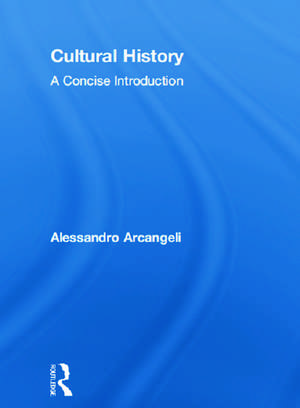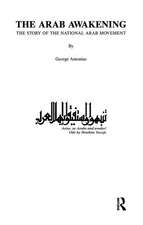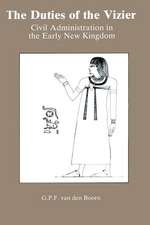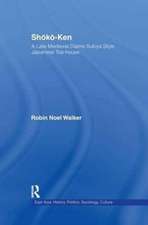Cultural History: A Concise Introduction
Autor Alessandro Arcangelien Limba Engleză Hardback – 14 oct 2011
In this introduction to cultural history as a subdiscipline, the reader will find the key steps in the historical development of the field from 1850 to the present. It surveys different ways in which cultural history has been practised, exploring intellectual history, the history of ideas and concepts, of mentalities, of symbols and representations, and of languages and discourses.
Cultural History also maps the territory cultural history most effectively enlightens: gender; the family and sexuality; the body; senses and emotions and images; material culture and consumption; the media and communication. Lastly, it includes an appendix of biographies of a number of influential cultural historians.
This concise and accessible introduction will be an essential volume for any university student studying cultural history.
| Toate formatele și edițiile | Preț | Express |
|---|---|---|
| Paperback (1) | 342.04 lei 6-8 săpt. | |
| Taylor & Francis – 12 oct 2011 | 342.04 lei 6-8 săpt. | |
| Hardback (1) | 999.46 lei 6-8 săpt. | |
| Taylor & Francis – 14 oct 2011 | 999.46 lei 6-8 săpt. |
Preț: 999.46 lei
Preț vechi: 1218.86 lei
-18% Nou
Puncte Express: 1499
Preț estimativ în valută:
191.24€ • 199.69$ • 157.92£
191.24€ • 199.69$ • 157.92£
Carte tipărită la comandă
Livrare economică 15-29 aprilie
Preluare comenzi: 021 569.72.76
Specificații
ISBN-13: 9780415667753
ISBN-10: 0415667755
Pagini: 144
Dimensiuni: 138 x 216 x 13 mm
Greutate: 0.43 kg
Ediția:1
Editura: Taylor & Francis
Colecția Routledge
Locul publicării:Oxford, United Kingdom
ISBN-10: 0415667755
Pagini: 144
Dimensiuni: 138 x 216 x 13 mm
Greutate: 0.43 kg
Ediția:1
Editura: Taylor & Francis
Colecția Routledge
Locul publicării:Oxford, United Kingdom
Public țintă
Postgraduate and UndergraduateCuprins
Preface. 1. In search of a definition: a fuzzy field of enquiry 2. Traditions and reinventions 3. Interwoven paths 4. Territories Suggestions for further reading. Appendix. Bibliography. Index
Notă biografică
Alessandro Arcangeli is Associate Professor of Early Modern History at the University of Verona, Italy. He has studied the cultural history of Renaissance Europe, with particular focus on dance (Davide o Salomè?, 2000), leisure (Recreation in the Renaissance, 2003) and the medical discourse on lifestyle.
Recenzii
"Arcangeli has written an up-to-date and lucid introduction to cultural history. The scope of the book, and the variety of approaches and orientations included, is impressive, even more so when taking into account the very concise character of the book. The book is also well translated; in this respect, the editors of Routledge are to be credited... I recommend the book to anyone interested in cultural history, yet especially to teachers of undergraduate courses who would like to acquaint their students with basic though accurate knowledge of cultural history." - Steven Schouten, Cultural History 2.1 (2013): 103-106. Edinburgh University Press
Descriere
The expression Cultural History is generally used today to signal a particular approach to history, one which could be applied to any object and is mainly concerned with the sense men and women from the past gave to the world they lived in.
In this introduction to cultural history as a sub-discipline the reader will find the key steps in the historical development of the field, from 1850 to the present. It surveys different ways cultural history has been practised exploring intellectual history, the history of ideas and concepts, of mentalities, of symbols and representations and of languages and discourses. Cultural History also maps the territory cultural history most effectively enlightens, gender; the family and sexuality, the body; senses and emotions and images; material culture and consumption, the media and communication. Lastly it includes an appendix of biographies of a number of influential cultural historians.
This concise and accessible introduction will be an essential volume for any university student studying cultural history.
In this introduction to cultural history as a sub-discipline the reader will find the key steps in the historical development of the field, from 1850 to the present. It surveys different ways cultural history has been practised exploring intellectual history, the history of ideas and concepts, of mentalities, of symbols and representations and of languages and discourses. Cultural History also maps the territory cultural history most effectively enlightens, gender; the family and sexuality, the body; senses and emotions and images; material culture and consumption, the media and communication. Lastly it includes an appendix of biographies of a number of influential cultural historians.
This concise and accessible introduction will be an essential volume for any university student studying cultural history.









